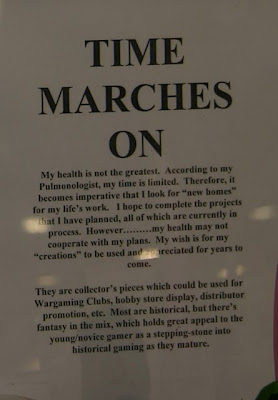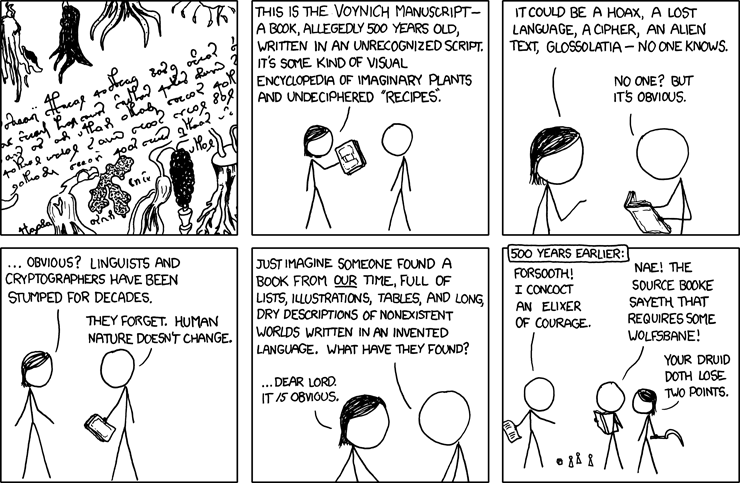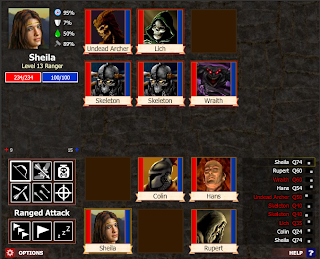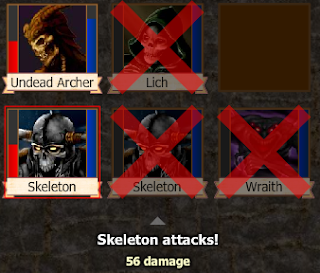Professional Gaming ? Modeling with Wargames
E160A -- An open panel discussion with audience participation, examining the state-of-the-art usage of wargames for modeling and decision support. Part of the Strategicorps event track. All ages / 50 seats. Run by Brant Guillory.
This sounded like something that might really be interesting, and since I paid for that Strategicorps ribbon so I really ought to use it. This might have been the best decision I made all week.
I arrived just as things were about to get started. With more panel members than audience, Brant decided to have us all pull our chairs into a circle to facilitate discussion. Good call Brant. Introductions ensued:
The Panel:
 Brant Guillory (Moderator, former US Army Captain, PhD candidate in Communications, Bayonet Games) 1,2,3
Brant Guillory (Moderator, former US Army Captain, PhD candidate in Communications, Bayonet Games) 1,2,3 Col. Matthew Caffery (Chief, Wargaming Plans & Programs Directorate, Air Force Research Laboratory) See 1,2
Col. Matthew Caffery (Chief, Wargaming Plans & Programs Directorate, Air Force Research Laboratory) See 1,2 John Tiller, PhD (independent game developer with Matrix Games and HPS Simulations) See 1,2,3
John Tiller, PhD (independent game developer with Matrix Games and HPS Simulations) See 1,2,3 James Sterrett, PhD (Simulations Instructor, U.S. Army Command and General Staff College (Northrup Grumman), Military Historian, Ad Adstra Games {Attack Vector : Tactical}) 1,2,3
James Sterrett, PhD (Simulations Instructor, U.S. Army Command and General Staff College (Northrup Grumman), Military Historian, Ad Adstra Games {Attack Vector : Tactical}) 1,2,3
Joseph Miranda (Editor Strategy & Tactics Magazine, MCS Group) 1,2,3
Maj. Michael Martin (CGSC graduate, soon-to-be PhD candidate in Modeling and Simulations at ODU in Norfolk.)
The audience (as best I recall):
Col. Ken Guillory (MLRS commanders in Desert Storm I: a man of vast military experience and father of Brant Guillory) 1
Robert Crandall (Programmer and Games Developer, Core Talent Games, Matrix Games)
Jim Snyder (Matrix Games, Lock and Load Games) 1,
Myself (DE)
Several others joined in as well, including a number of avid gamers, but I didn't get any more names.
---------------------------------------
The following is my (pitiful) attempt to summarize some of the discussion, more-or-less stream-of-consciousness style. I will attempt to attribute comments where I can. All quotations are approximate.
BG: This discussion is intended to be about the use of games and simulation to model warefare, rather than as a training tool.
JT: The modeling process is "legitimate but not realistic.
MM: Modeling guys get good data on the physical aspects, but not data on psychological aspects. A favorite tactic: "suppression fire and sneak around" works because it distracts the enemy.
KG: (on adjudication of information) personalities matter. Not all leaders are equally about to pass on important information.
MM: Try a search on "Correlation of Forces and Means".
MC: Air Force Command structure is nearly Theater to Pilot. This is necessary because functional groups (bombers, ECCM, refueling tankers) are not based together.
[DE: the discussion turned to data representing units - like maximum road speed - and what that means]
JT: A tank platoon moves at the speed of its most confused Sergeant.
BG: Average speed means more than maximum speed (says the man who rode an abramsM1A1 tank down the road at 60+ mph!).
JT: Mission is more important than the vehicle. Recon units will be faster because that is their mission, not (entirely) because their vehicles are faster.
KG: Not the maxumum speed OR the average, but what you need when you need it.
RC: Maximums are useful for specific instances (what you need when you need it again).
MC: [drew a chart dipicting the relationship between granulatity, completeness, and interpretability in simulations, which I did not capture adequately. The essence was that you cannot have all three at the same time.]
JM: CRTs (combat results tables) based on data resresenting actual outcomes.
??: Logistics controls movement
??: "Generals study logistics"
??: different levels and aspects of simulation
??: Outcome of simulation may be affected by the agenda of those creating it.
DE: [summarizing] There was additional discussion of whether there could be a game simply about logistics [there are many examples] or if there needs to be direct conflict [something to go BOOM at the end].
JM?: [a good story on why a simulation cannot contain all possible outcomes] "Under what circumstances can a Calvary unit capture a ship at sea?" [and it actually happened!]
??: Does "resting" units get rewarded in games?
MC: [modestly described what has been called the "Caffrey Loop"] What can we learn from history that can make better games?
--------------------------------------------
The official discussion concluded, but 7-8 of us adjorned to the bar across the street. The evening concluded with several very pleasant rounds of beer, and (among many other things) a discussion of the merits of weaponized Silly-Putty (I get the strangest ideas sometimes).
I would like to thank the entire group, and especially Brant for moderating a great session.
[7/6/09 -- Thanks to the active responses of many of the panel members, I have been able to update and correct this post.]
[7/8/09 -- I now recall there was discussion of how people with particular agendas might influence the simulation results, and how this might be overcome. I commented that we were now talking about modeling the simulation process itself. At this point, Brant threatened "that if I got any more analytical, I would be require to buy the first round of beer". For the record, I bought the first round. :-) ]
[This post has been back-dated to approximately the actual time it occurred.]














